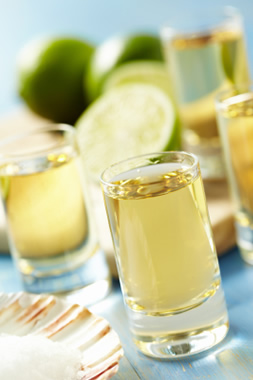To shoot or not to shoot

Welcome to Tequila U, where we'll advise you about using the various aged tequilas - Blanco, Joven, Reposado, Añejo and Extra Añejo. They aren't created equal and have very different applications.
Agave tequila is produced from blue agave and is exclusively grown and harvested in Jalisco, Mexico. Around 1600, Don Pedro Sánchez de Tagle, the Marquis of Altamira, began mass-producing tequila at the first factory in the territory of modern-day Jalisco. Since then, it's become one the most popular spirits next to vodka, with upwards of 250 different labels to choose from.
Here are some tips for enjoying the various types:
Blanco - Blanco tequila is not aged, and is clear and transparent and must be bottled immediately after distillation. It is the base for all the other types of tequilas. It has the true bouquet and flavor of the blue agave and is typically strong in alcohol content. Perfect for mixing with cocktails and Margaritas and not great for shooting.
Joven ("young") or oro ("gold"): a mixture of blanco tequila and reposado tequila. A good blend for mixing cocktails.
Reposado - Sometimes called "rested": Blanco that is aged in white oak barrels or casks for more than two months and up to one year. A more mellow taste with a pale color. Also perfect for cocktails a Margaritas adding an aged (smoother) flavor to anything mixed with it.
Añejo - Sometimes called "aged": Aged in white oak barrels or casks for more than one year, with each barrel capacity less than 159 gallons. The oxidation through the wood barrels gives it a unique bouquet and taste producing an amber color and more woody flavor. Best for sipping, not for using in Margaritas or other cocktails. It's just too good to mix.
Extra Añejo ("extra aged" or "ultra aged"): aged a minimum of three years in oak barrels. This category was established in March 2006. Extra Añejo is ultra smooth and for sipping only, no need for a lime or salt.
More Tequila U to come, watch for new posts in the near future.
Cheers!


 Lybations
Lybations